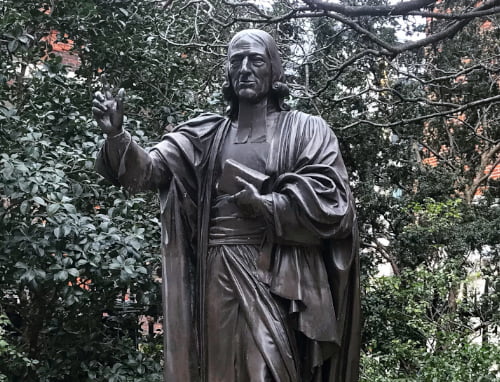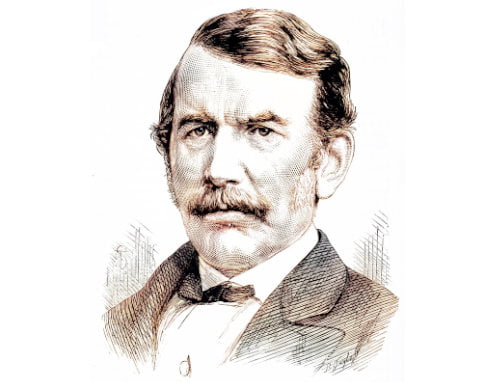
Thirteen Waves of Christian Missions
Historically, there have been at least thirteen distinct waves of Christian missions with new missionaries, short-term and long-term, being raised up and sent forth into God’s harvest fields.
Go into all the world and preach the gospel to every creature. He who believes and is baptised will be saved; but he who does not believe will be condemned
– Mark 16:15-16
1. After the ascension of the Lord Jesus Christ; at Pentecost when the Holy Spirit was outpoured and those present in the Upper Room received power from on high (Acts 1:8-14 and Acts 2:1-4). The disciples and the apostles went into all the world and proclaimed the Good News beginning in Jerusalem.
2. During the third to the sixth centuries much of Europe received the Good News, whilst in key locations there sprang up mission-sending centres with missionary-minded monks.
3. From AD 1100 to AD 1300, hundreds of Franciscans and Dominican monks went to evangelise the Muslims in North Africa, which had been a centre of Christianity in the second and third centuries. The Franciscan Revival (c.1209-1220), in Italy, gave extras impetus to the work, though in the span of two hundred years, two hundred monks from both the Franciscans and Dominican orders lost their lives in this missionary advance; many were martyred.
4. The fourth wave of missions came out of the Moravian Revival (1727), when in 1731, the Moravian Mission was founded and the small church at Herrnhut, (in modern-day Germany), sent more missionaries in twenty years than Protestant Christians had done in the past two centuries!
The Lord gave the Word; great was the company of those who proclaimed it
– Psalm 68:11
5. The fifth wave sprang out of the Evangelical Revival (1739-1791), at the end of the eighteenth century and rolled into the twentieth century. Missionaries sailed to the farthest part of the world; largely to the colonies of European nations, but also to the unevangelised around the Pacific Islands, Asia and Africa. The Baptist Missionary Society was birthed in 1792. The non-denominational London Missionary Society was founded in 1795. The Anglican Church Missionary Society began in 1799 and the British and Foreign Bible Society was formed in 1804, though its beginnings were birthed in 1787.

John Wesley of England, a former missionary to the American Indians (1735-1737), encouraged missions all his life. Wesley’s right-hand man, Dr. Thomas Coke, officially inaugurated Methodist Missions in 1787 and became known as the Missionary Bishop of Methodism. He crossed the Atlantic to America eighteen times whilst the Wesleyan Missionary Society began its work in 1817.
6. The American Board of Commissioners for Foreign Missions (1810), was the direct outcome of the Haystack Revival of 1806, which broke out at Williams College in America, touched other colleges and became the sixth wave of missions.
7. The seventh wave came out of the 1857-1860 revival that began in New York, America, and went worldwide. This led to an estimated 5 million converts and more people were called into missions.

On David Livingstone’s return to Britain in 1856, after seventeen years in Africa, he gave new impetus to the cause of missions as he spoke at a number of universities (again on his return in 1864-1865) and on the news of his death in 1873. Hudson Taylor, a missionary to China was encouraged by the revival in Britain (1858-1860) and believed that God would bless the mission field. He founded the China Inland Mission (CIM) in June 1865.
8. The eighth wave came from the Student Volunteer Movement which in forty years (1888-1928), led to an estimated 20,000 students becoming missionaries! This began when the Cambridge Seven joined the CIM and before sailing to China in February 1885, spoke at a number of influential British universities, challenging the students to do something with their lives.
As cold water to a weary soul, so is good news from a far country
– Proverbs 25:25
9. The Welsh Revival of 1904-1905 led to more than a dozen revivals around the globe and the ninth wave sprung from the campuses revivals of 1905 (largely in America), which led to an estimated 10,000-15,000 students becoming missionaries!
10. The tenth wave of missions began in the late 1920s, the native missionary movement, when Andrew Gih was touched by the Shanghai Revival (1925). He began the Bethel Evangelistic Band / Bethel Mission, where Chinese Christians formed teams and began mass evangelism, first in China, then across Asia. However, during the Pyongyang Great Revival (1907-1910), Koreans began mass evangelism campaigns such as the ‘Movement of Saving One Million Souls for Christ’ which began in the autumn of 1909. The Oriental Missionary Society (OMS) was founded in 1902 and in 1912, the ‘Great Village Campaign’ began where all 10.3 million homes in Japan were given a Gospel booklet and was completed by 1918! By 1923, the Tokyo Bible Training Institute had trained no less than one thousand national preachers and by 1925, OMS had 201 mission stations and an equal number of itinerary points had been opened.
11. The eleventh wave of missions began in the late 1950s / early 1960s when lay personnel took time out from work and went on short-term missions (STMs). These increased in strength as new mission agencies such as Youth With A Mission (YWAM), Campus Crusade for Christ (CCFC) and Operation Mobilisation (OM) were birthed giving the opportunity for a layperson to “Go,” even if just for a few weeks. This was not entirely new, in 1812, artisans (skilled workers of various trades) were sent out by the Church Missionary Society (CMS) to relieve and help the missionaries. These workers were known as Short Service Missionaries.
In 1949, CMS had 980 full-time missionaries alongside 39 on Short Service. CMS state that Short Service is when ‘a recruit only desires to offer for any period and not for life service.’ By the 1960s, ‘opportunities for students and professional people from several months to two years, to replace missionaries on furlough or carry out special assignments’ were known as Short Terms Abroad. Today we call them Short-Term Missions (STMs).
12. From China in the 1920s came the vision of ‘Back to Jerusalem;’ Chinese Christians evangelising along the old Silk Road (which lies along the 10/40 window – the least evangelised countries of the world situated at the 10-40 latitude), which was re-birthed in the 1980s. Since the 1980s, the native missionary movement from developing countries within the continents of Asia and Africa have mobilised to take the Good News to the nations along the 10/40 window of which Gospel for Asia (GFA) is very prominent.
13. From the 1990s onwards, but especially in the twenty-first century, millions of Americans (and those of other nationalities) have accepted the call to their short-term mission.
To him who knows to do good and does not do it, to him it is sin
– James 4:17
More than a century ago, an anonymous writer penned the following: ‘It is a mistake to suppose that aggressive spiritual work can be successfully accomplished by setting apart a few weeks in the year for it, without the most careful preparation for it during the rest of the time.’
Whatever you do, do it heartily, as to the Lord and not to men
– Colossians 3:23
- Mission Pages
- Holy Spirit Revival
- Scriptural Inspiration for Evangelism and World Missions
- In the Footsteps of Great Missionaries
Used with permission from How to Plan, Prepare and Successfully Complete Your Short-Term Mission by Mathew Backholer. Find out more about Mathew’s books here.








